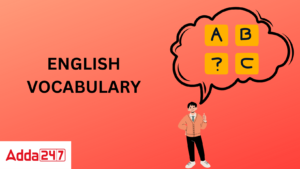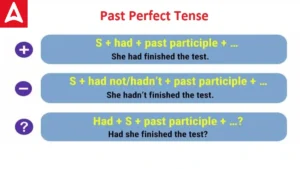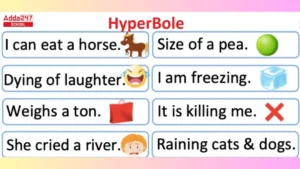The present perfect tense is used in sentences to indicate an action that started in the recent past and is still ongoing. It is also known as the present perfect progressive tense because the action progresses from the past to the present. The meaning of the present perfect continuous tense is very close to the use of the present perfect tense. However, there are some important differences that distinguish when and how the present perfect tense is preferred.
Present Perfect Continuous Tense
Generally, we use the present perfect continuous tense to talk about something that started in the past and is still happening today. Focus on what will happen, rather than what happened (or ended) at some point in the past. You can also use the present perfect tense to emphasize the time that has passed while something is happening, or that something is temporary. It can also be used when talking about something that happened recently or something that was recently completed.
Present Perfect Continuous Tense Formula
The present perfect continuous tense can be formed by using the formula given below.
| Subject + have/has + been + present participle (verb+ing) + since/for (if needed) + the rest of the sentence. |
However, there are other things to be aware of. You should also learn how sentences are constructed using the present tense of verbs when the verbs are positive, negative, interrogative, and negative interrogative.
Look at the table below to get a better understanding of the structure of the present tense.
| Positive | Negative | Interrogative | Negative Interrogative |
| Subject + have/has + been + present participle (verb+ing) + the rest of the sentence | Subject + have/has +not+ been+present participle (verb+ing) + the rest of the sentence | Have/has + subject + been+ present participle (verb+ing) + the rest of the sentence? | Have/has + subject + not+been+ present participle (verb+ing) + the rest of the sentence?
(or) Ain’t + subject +been+ present participle (verb+ing) + the rest of the sentence? |
Examples
|
Examples
|
Examples
|
Examples
|
Present Perfect Continuous Tense Since and For Uses Rules
Since – Since is used when the exact point of time is given.
For example:
It has been raining since morning.
In the above example, a particular time is given which is morning so we have used ‘since’.
For – For is used when the exact point of time is not given, a period of time is there.
For example:
I have been living there for a month.
In the above example, a particular time is not given, it can be a full month or half month so we have used ‘for’ here.
Present Perfect Continuous Tense Sentences
Commonly uses of Present Perfect Continuous Tenses are given below:
-
Present perfect Tense is used when the action started in the past and still continues.
The present perfect continuous tense is often used to talk about something that started in the past (always “before”) and is still happening (unfinished) in the present. We usually indicate the duration of the problem specifically with the preposition “for” or “since”. Sometimes different adverbs can be used. In some cases, you don’t need to specify a period at all.
- “I have been living in New York City.”
- “I have been living in New York City for three years.”
- “I have been living in New York City since I was 18.”
- “I have been living in New York City all my life.”
Each of the examples above implicitly assumes that the speaker still lives in New York City. Only the duration changes. In this usage, the present perfect continuous tense is almost identical in meaning to the present perfect tense, and in fact, most of these examples make sense either way.
2. Present Perfect Tense is used to emphasize the length of the time.
The present perfect tense is especially useful for emphasizing the time that has passed while something is happening. This is especially true when the sentence’s meaning can be expressed in the present perfect tense.
- “They have studied for three weeks for this exam.” (present perfect)
- “They have been studying for three weeks for this exam.” (present perfect continuous)
These differences are small but noticeable. In both examples, the present perfect tense emphasizes how long the action has lasted and the fact that it is still happening. The present perfect tense simply states the finished result and how long it took.
Present Perfect Continuous Tense Rules
Like the present perfect tense, the present perfect continuous tense consists of an auxiliary verb and the main verb. The only difference is that its two auxiliary and main verbs in the present participle form are used instead of the auxiliary and main verbs in the past participle form. The auxiliary verbs used are “have” or “has” and “been”. These verbs are followed by the present participle of the main verb, which is formed by adding “ing” to the base verb.
Another fact to remember is that the auxiliary verbs ‘have’ and ‘has’ are used like the present perfect, according to the pronoun or noun used in the sentence.
Difference between Present Perfect Tense and Present Perfect Continuous Tense
By the given table we will understand the difference between Present perfect Tense and Present Perfect Continuous Tense
| Present Perfect Tense | Present Perfect Continuous Tense |
| The present perfect tense is used to describe actions or events that began and ended in the recent past and also affect the present. | The present perfect tense, on the other hand, is used to describe an action or event that started in the recent past and is still ongoing at the time the speaker is referring to it. |
| For Example:- She has worked in the school for 8 years. | For example:- She has been working in the school for eight years |
| The above sentence means that she has worked as a teacher for eight years and now works or does not work as a teacher anymore. | The above sentence means that she has been working as a teacher for eight years and is still working as a teacher now. |
Present Perfect Continuous Tense Examples
Here are some examples given below for a better understanding of the Present Perfect Continuous Tense
- You have not been telling the truth.
- He has been going to watch a movie.
- She has been reading a book since morning.
- Piyush has been studying for three hours.
- They have been playing football since the afternoon.
- Where have you been cooking food?
- He has been treating her wife like a princess.
- She has been preparing for the competitive exam for three months.
- I have been trying to learn the French language.
- Ben has been playing a video game since 6 p.m.
Present Perfect Continuous Tense Exercises
Assess yourself by doing the following exercise:
Fill the verbs into the correct form (present perfect progressive).
- He (work)…………..in the same school since 2011.
- I (wait) …………for you since four o’clock.
- Curie (live) …………. in Brazil since 2000.
- Why is he so tired? He (play) …………….cricket for five hours.
- How long (learn / you) ………………. Yoga?
- We (look for) ……………the shortcut for more than an hour.
- I (live) ………………without water for two weeks.
- The film (run / not) ………………for ten minutes yet, but there’s a commercial advertisement.
- How long (work / she) ………………….in the kitchen?
- She (not / be) ………………….in the cafe for more than an hour.
Check your answers
- He (work) has been working in the same school since 2011.
- I (wait) have been waiting for you since four o’clock.
- Curie (live) has been living in Brazil since 2000.
- Why is he so tired? He (play) has been playing cricket for five hours.
- How long (learn / you) have you been learning Yoga?
- We (look for) have been looking for the shortcut for more than an hour.
- I (live) have been living without water for two weeks.
- The film (run / not) has not been running for ten minutes yet, but there’s a commercial advertisement.
- How long (work / she) has she been working in the kitchen?
- She (not / be) has not been in the cafe for more than an hour.
Present Perfect Continuous Tense in Hindi
वर्तमान पूर्ण काल का उपयोग वाक्यों में एक क्रिया को इंगित करने के लिए किया जाता है जो हाल के दिनों में शुरू हुई और अभी भी चल रही है। इसे वर्तमान पूर्ण प्रगतिशील काल के रूप में भी जाना जाता है क्योंकि क्रिया अतीत से वर्तमान तक आगे बढ़ती है।
वर्तमान पूर्ण निरंतर काल का अर्थ वर्तमान पूर्ण काल के उपयोग के बहुत करीब है। हालांकि, कुछ महत्वपूर्ण अंतर हैं जो यह भेद करते हैं कि वर्तमान पूर्ण काल कब और कैसे पसंद किया जाता है।
आम तौर पर, हम वर्तमान पूर्ण निरंतर काल का उपयोग किसी ऐसी चीज़ के बारे में बात करने के लिए करते हैं जो अतीत में शुरू हुई थी और आज भी हो रही है। अतीत में किसी बिंदु पर क्या हुआ (या समाप्त हुआ) के बजाय क्या होगा, इस पर ध्यान दें। आप वर्तमान पूर्ण काल का उपयोग उस समय पर जोर देने के लिए भी कर सकते हैं जब कुछ हो रहा हो, या कुछ अस्थायी हो। इसका उपयोग हाल ही में हुई किसी चीज़ या हाल ही में पूरी हुई किसी चीज़ के बारे में बात करते समय भी किया जा सकता है।
प्रेजेंट परफेक्ट कंटीन्यूअस टेंस – फॉर्मूला
वर्तमान पूर्ण निरंतर काल नीचे दिए गए सूत्र का उपयोग करके बनाया जा सकता है।
विषय + है/है + गया है + वर्तमान कृदंत (क्रिया + आईएनजी) + तब से/के लिए (यदि आवश्यक हो) + शेष वाक्य।
हालांकि, इसके बारे में जागरूक होने के लिए अन्य चीजें हैं। आपको यह भी सीखना चाहिए कि जब क्रिया सकारात्मक, नकारात्मक, प्रश्नवाचक और नकारात्मक प्रश्नवाचक होती है, तो क्रियाओं के वर्तमान काल का उपयोग करके वाक्यों का निर्माण कैसे किया जाता है।
Present Perfect Continuous Tense Examples in Hindi
प्रेजेंट परफेक्ट कंटीन्यूअस टेंस की बेहतर समझ के लिए नीचे कुछ उदाहरण दिए गए हैं:
- आप सच नहीं कह रहे हैं।
- वह एक फिल्म देखने जा रहा है।
- वह सुबह से एक किताब पढ़ रही है।
- पीयूष तीन घंटे से पढ़ रहा है।
- वे दोपहर से फ़ुटबॉल खेल रहे हैं.
- आप खाना कहाँ बना रहे थे?
- वह अपनी पत्नी के साथ राजकुमारी जैसा व्यवहार करता रहा है।
- वह तीन महीने से प्रतियोगी परीक्षा की तैयारी कर रही है।
- मैं फ्रेंच भाषा सीखने की कोशिश कर रहा हूं।
- बेन शाम 6 बजे से वीडियो गेम खेल रहा है।
Related Post:
- Personal Pronouns: Definition, Examples, Exercise And Chart
- Relative Pronoun: Definition And Examples, Exercise
- Reflexive Pronoun: Definition, Examples, Exercise
- Letter Writing Examples In English & Hindi
- Present Perfect Tense-Formula, Examples, Exercise, Rules, Sentences
- Types Of Sentences With Examples, Definition, Exercises, Chart, PDF
- Opposite Words In English And Hindi
- Transitive And Intransitive Verb: Definition, Examples, Exercise
- Possessive Pronoun: Definition, Examples, Exercise Sentences











 Vocabulary Words with Meaning and Senten...
Vocabulary Words with Meaning and Senten...
 Past Perfect Tense: Definition, Formula,...
Past Perfect Tense: Definition, Formula,...
 Hyperbole- Explanation, Definition, Exam...
Hyperbole- Explanation, Definition, Exam...














